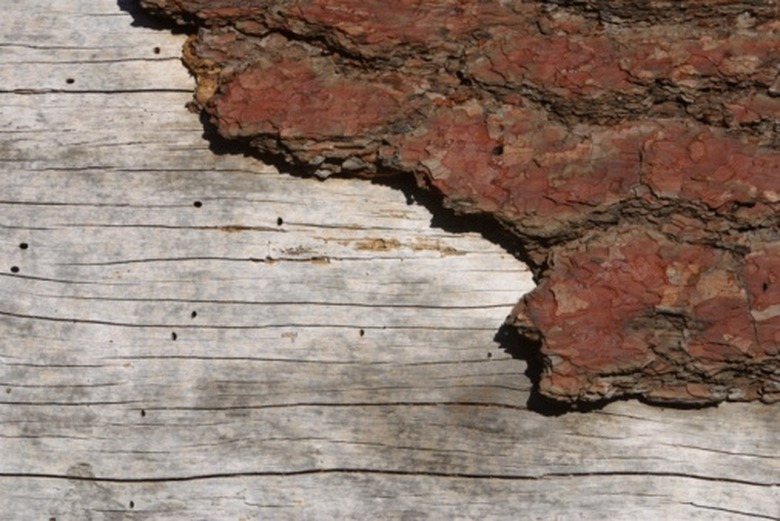How To Remove Tree Bark
Things Needed
- Shaving horse, vice or log-compatible clamp
- Hack saw or pruning saw
- Draw knife
- Bark spud
- Work gloves
There are a number of reasons to strip a felled tree or log of its bark. Tree bark is removed to prepare logs for building material or chainsaw sculptures, to prevent insect infestations in stores of firewood, and to avoid creosote buildup in the chimney due to burning bark smoke. With proper tools and techniques, bark is removed cleanly and safely. The ease at which the bark is removed largely depends on the type of wood and whether it is green or dry.
Step 1
Cut off any remaining limbs, using a hacksaw or a pruning saw.
Step 2
Secure the log into a shaving horse, vice or other type of secure clamp.
Step 3
Grip the handles at each end of a drawknife with each hand. Position the blade at the cut end, pointing the saw's teeth into the tissue of the cambium layer where the bark meets the sapwood. Use sawing motions while pulling on the drawknife to work the blade under the bark.
Step 4
Remove the drawknife and wedge the tip of a bark spud under the bark. Push down on the handle of the bark spud to pry off a chunk of bark.
Step 5
Continue to use the drawknife and bark spud in tandem to cut into and remove bark. Work gradually towards the other end of the log. Also put on a pair of work gloves and peel as much bark as possible by hand.
Tip
Break up leftover bark to use as mulch or groundcover in the lawn and garden.
Warning
Avoid using good shop tools, such as chisels and pry bars, to remove bark, as they may end up covered in sticky sap.
